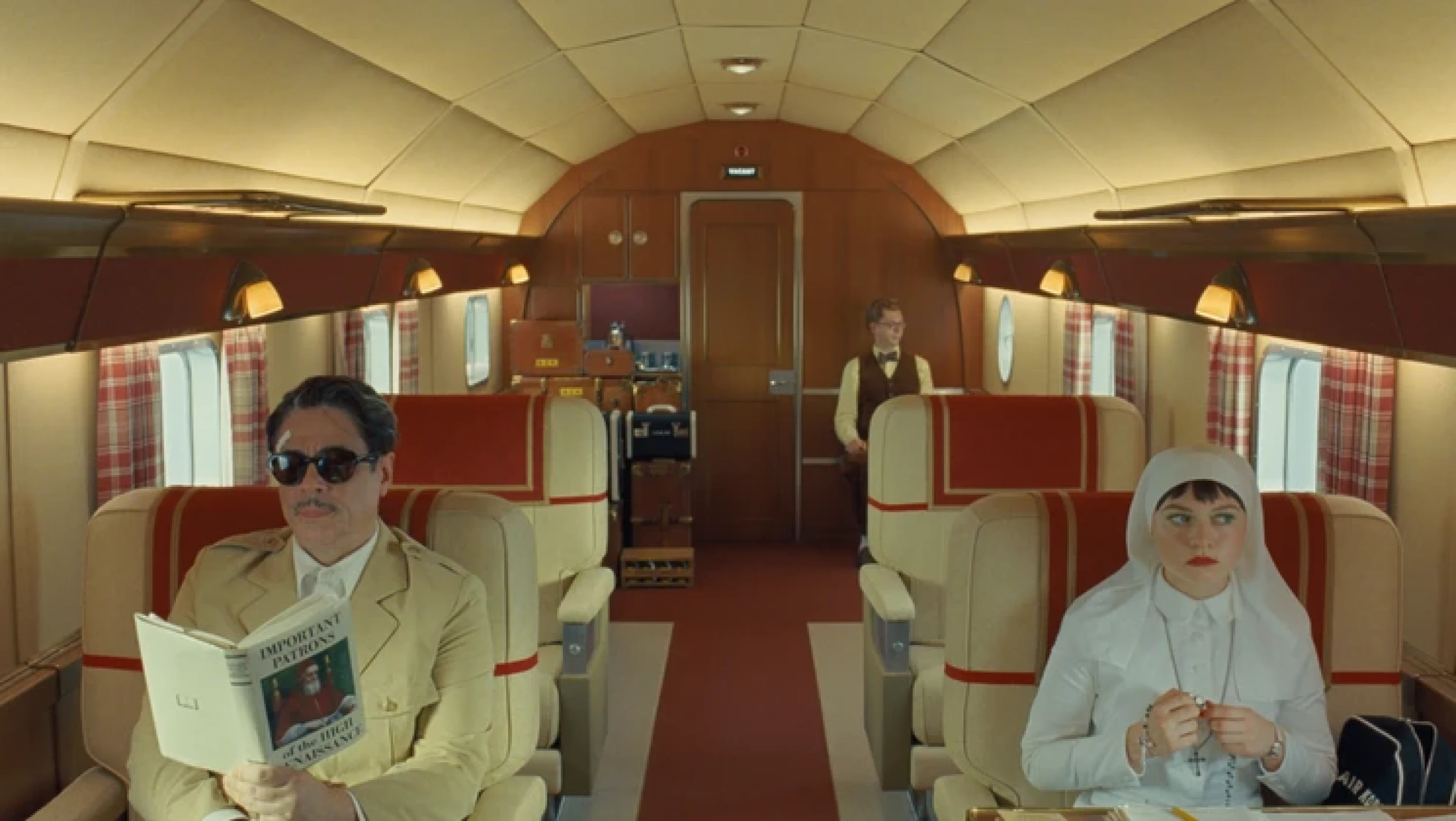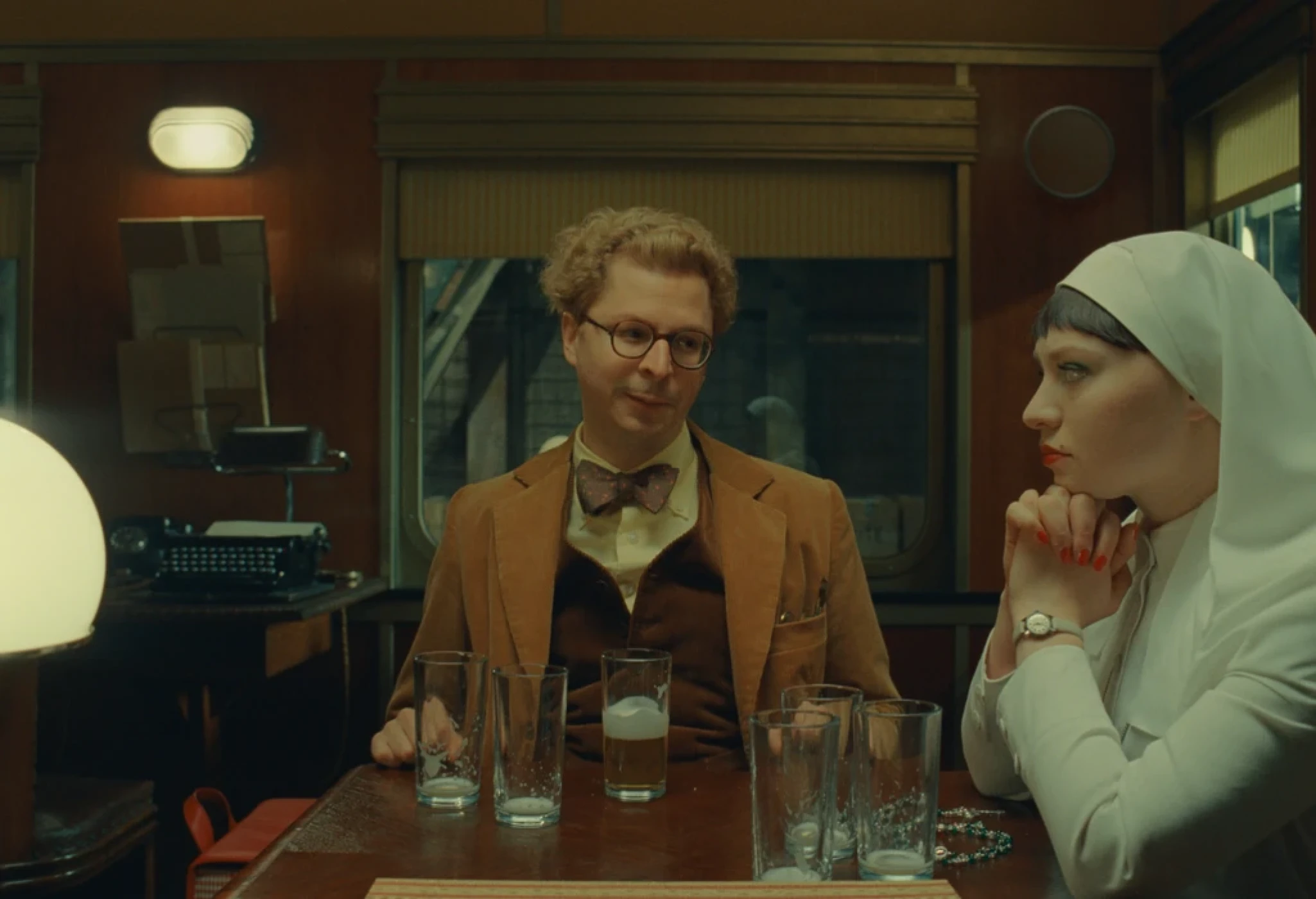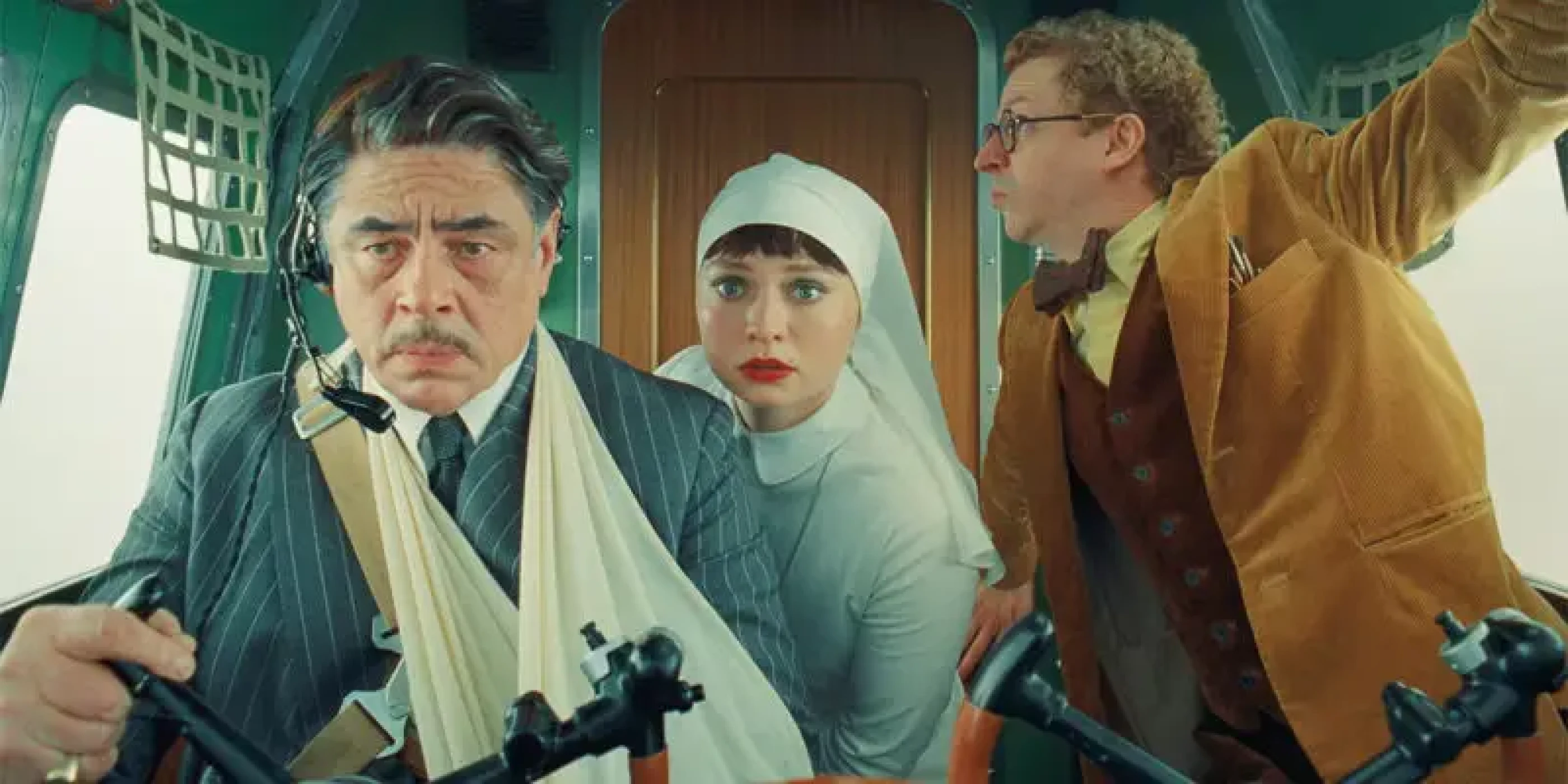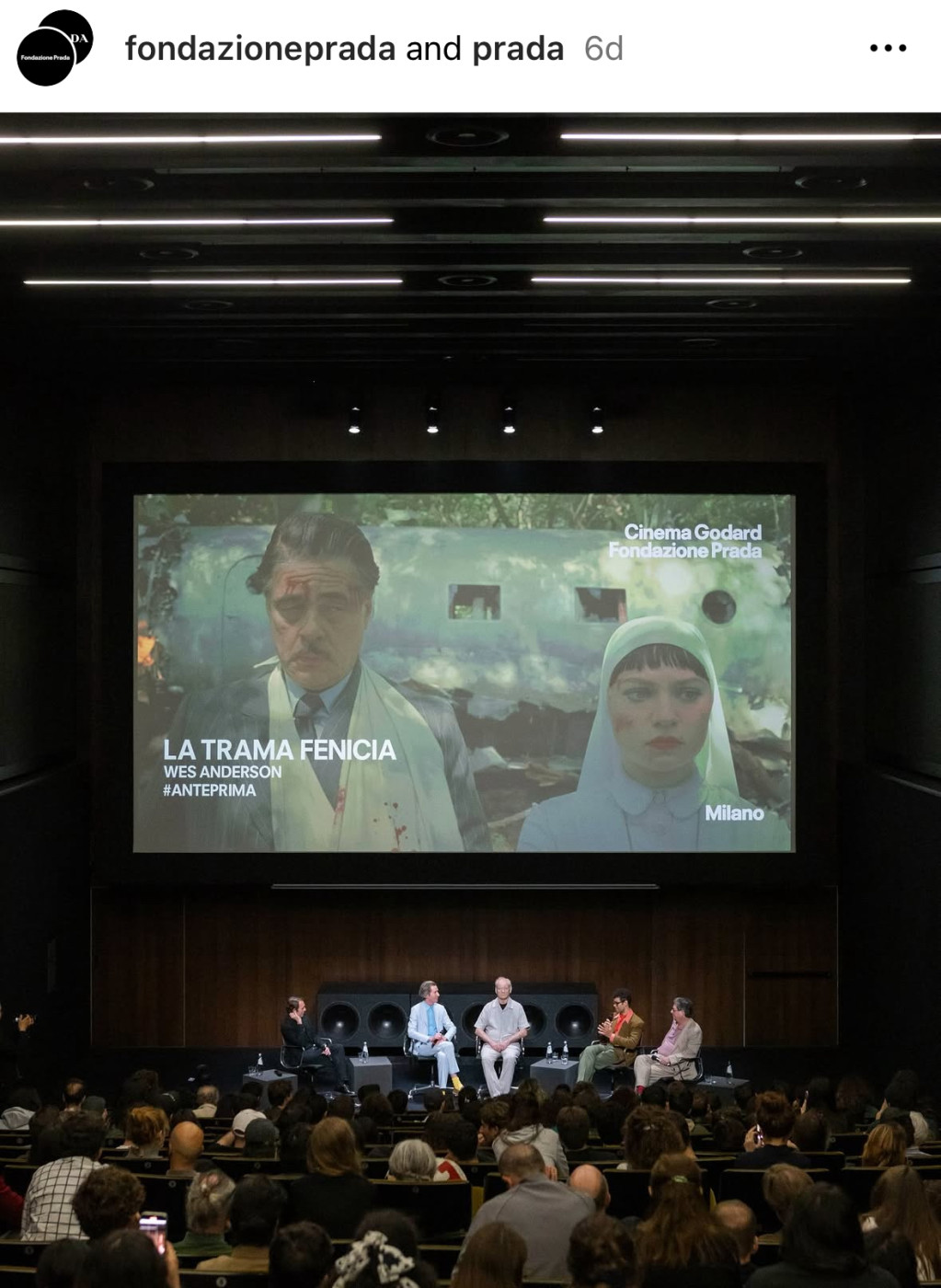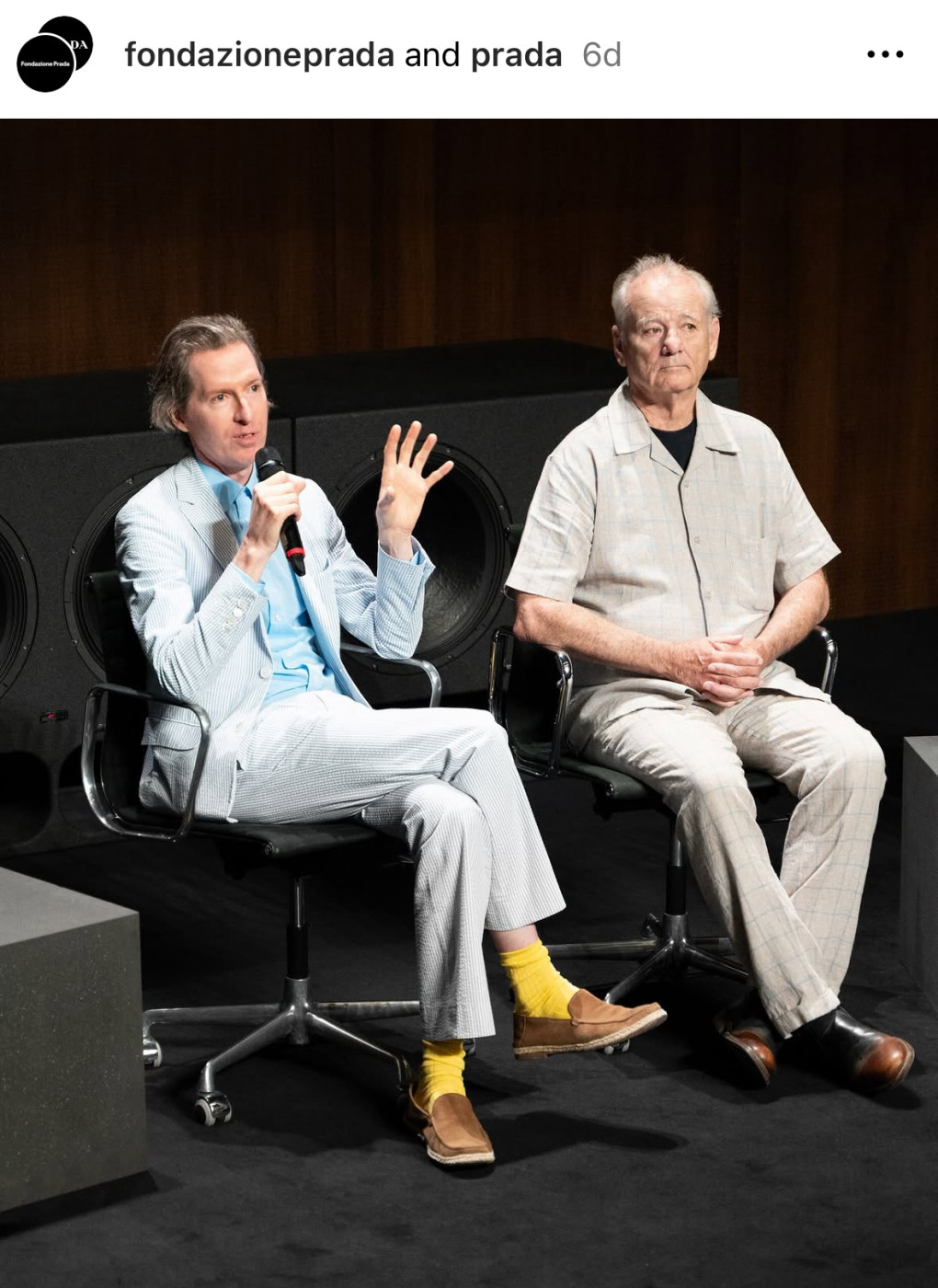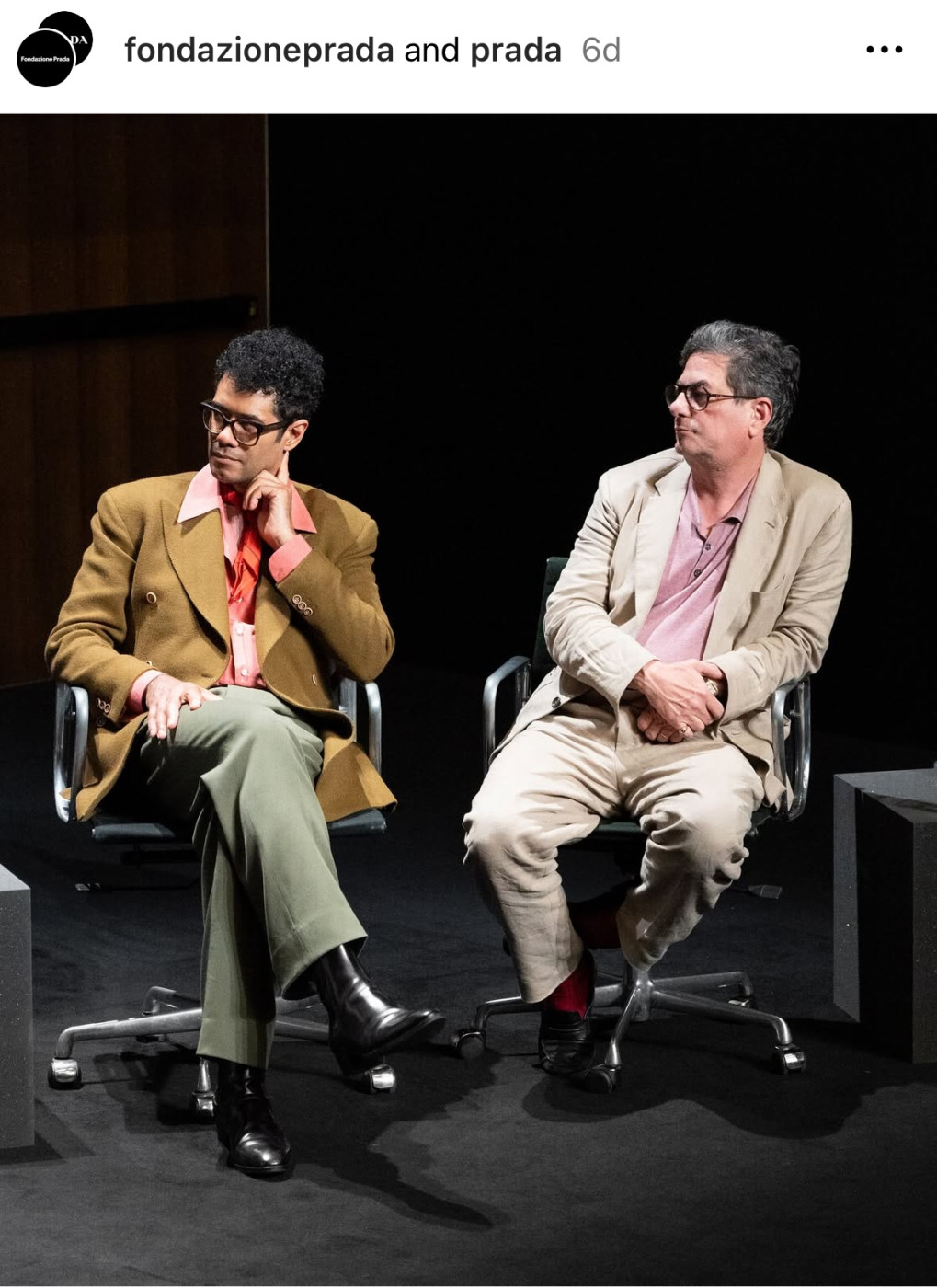

Wes x Prada: A Dazzling Alliance of Fashion and Cinema
One of the most spectacular premieres of this year’s Cannes Film Festival was, unsurprisingly, the latest film by cinematic fabulist Wes Anderson — the master of modern-day film kaleidoscopes. His works, rich in detail and color, have long evolved into a visual genre of their own, stitched together like a fashion designer’s runway collection, complete with its own brand book.
The Phoenician Scheme is no exception. Though this time Anderson has delivered a fast-paced spy thriller, packed with assassination plots, car chases, hand-to-hand combat, and a world conspiracy centered around a powerful industrialist and billionaire played by Benicio del Toro, at its heart lies the director’s eternal theme — beauty, and a dreamlike vision of a bygone era.
“The starting point was trying to imagine something about those European tycoons of the 1950s, like Aristotle Onassis or Stavros Niarchos,” Anderson explained during the festival. That idea gave birth to his latest creation, as visually rich and stylistically flawless as ever. The elegant postwar European era — with its glamorous resorts, Greek billionaires, yachts, private jets, and a distinctly austere glamour — fits seamlessly into the Andersonian universe. Watching the film feels like flipping through the pages of Vogue, Wallpaper, or Architectural Digest. As always, the director’s work is less a historical reconstruction than a carefully orchestrated fantasy. It is this imaginative dimension that distinguishes a true auteur from a mere stylist.
Anderson’s unmistakable aesthetic — a specific palette, attention to texture and vintage detail — resonates far beyond the screen. It has become a source of inspiration not only for audiences but also for museums and fashion houses alike. This year, Paris’s Cinémathèque hosts the first large-scale retrospective devoted to Anderson’s jubilant body of work. The exhibition explores his aesthetic universe, meticulous set design, love of tableau vivant, symmetry, and graphic composition. It presents the filmmaker’s creative method — one free from Hollywood’s marketing formulas — and includes iconic costumes, many designed by the Oscar-winning Milena Canonero, polaroids, annotated scripts, hand-drawn sketches, storyboards, and production notebooks preserved by Anderson himself. The exhibition is organized in collaboration with London’s Design Museum, further blurring the boundaries between cinema and design.
Previously, a major Wes Anderson-themed exhibition took place at Milan’s Fondazione Prada — bringing the filmmaker even closer to the world of fashion. Two years ago, his previous film Asteroid City also premiered at Cannes, followed by a dedicated show at the Italian foundation titled Wes Anderson Asteroid City: Exhibition. Once again, everything came together: the retro Americana aesthetic, costumes, props, Broadway-inspired energy, and mid-century sci-fi vibes and… Scarlett Johansson. She starred in both films and, in many ways, has become Anderson’s new muse. She also happens to be the longtime muse of Prada. This year, she stunned the Cannes red carpet in a pale blue strapless Prada gown, its silhouette and draping reminiscent of Princess Diana’s 1987 Cannes dress, itself inspired by Grace Kelly’s iconic wardrobe in To Catch a Thief (1955), another Cannes classic.
The relationship between Prada and Wes Anderson has been built over many years, grounded in shared values: elegance, expressiveness, visual storytelling. His aesthetic — with its pastel hues, hyper-stylized silhouettes, and theatrical spatial logic — has infiltrated Prada’s boutique designs like in The Grand Budapest Hotel and seasonal collections. Anderson is not only a regular at fashion shows, but also a creative spirit behind the scenes, a silent trendsetter whose visual language has become intrinsic to fashion’s contemporary imagination. His palette of vivid and saturated colors — the pinks and purples in The Grand Budapest Hotel — his symmetrically composed images, and a touch of slightly vintage eccentricity define the “Andersonian” aesthetic, which has become a fashion phenomenon and resonates perfectly with the spirit of Prada. Above all, he is a close and loyal friend of Miuccia Prada, with whom he shares a distinct affinity: a taste for offbeat intellectual eccentricity, a fascination with uniforms, and a unique sense of restrained romanticism. Wes and Miuccia seem to share something similar in their DNA.
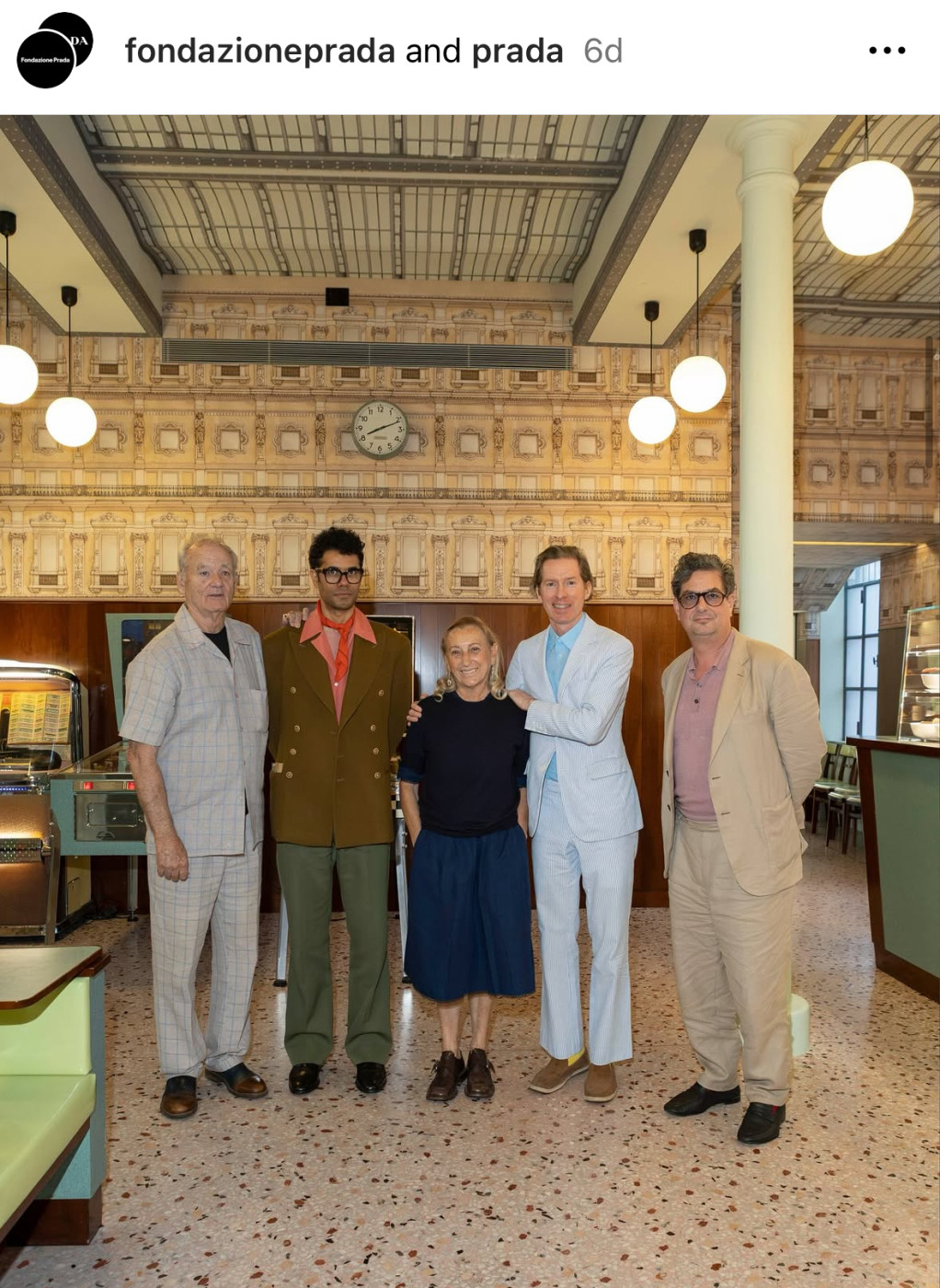
This mutual admiration culminated in actual collaborations. In 2013, Anderson directed the elegant short film Castello Cavalcanti, backed by Prada and co-written with Roman Coppola (son of Francis Ford Coppola, brother of Sofia). The film follows an unlucky Italian race car driver (played by frequent Anderson collaborator Jason Schwartzman) who crashes into a remote village and finds himself absorbed by its quaint traditions. With its warm colors and Fellini-esque nostalgia, the film radiates Dolce Vita charm.
In 2015, Prada once again turned to Anderson for inspiration, this time inviting him to design Bar Luce, the café at Fondazione Prada’s Milan space. The result is a living installation — a homage to Italian cinema of the 1950s and ’60s, reimagined through Anderson’s eyes. “There are no perfect corners here,” he said of the bar. “It was designed for real life — for drinking, chatting, reading. While it could easily be a movie set, I think it’s a better place to write a script. I tried to design a bar where I would personally like to spend a non-fictional evening.”
Two years later, Anderson curated Spitzmaus Mummy in a Coffin and Other Treasures, an exhibition at Vienna’s Kunsthistorisches Museum, once again in partnership with Fondazione Prada. His aesthetic curiosity, bordering on obsession, continues to bridge cinema, design, and fashion in new and unexpected ways.
This synergy between auteurs and fashion houses is not unique, but few do it with Anderson’s panache. Sofia Coppola has long collaborated with Louis Vuitton, directing campaign films filled with subtle grace. The late David Lynch created enigmatic shorts for Dior. Luca Guadagnino (Call Me by Your Name, Challengers), another cinematic stylist, teamed up with Valentino on The Staggering Girl, a short drama inspired by the brand’s Fall/Winter 2018 collection designed by Pierpaolo Piccioli, which premiered at Cannes in 2019.
Still, Anderson stands out. His passion for fashion is more than surface-level — it’s woven into the very fabric of his storytelling. In his hands, cinema becomes couture, and couture becomes cinema. It is, truly, an alliance as dazzling as the red carpet itself. For him, fashion isn’t an accessory — it’s part of the mise-en-scène. It’s the story itself. In his work, the costumes are designed to reveal the characters’ psychology.
“He is a very popular filmmaker, especially in France,” explains Matthieu Orléan, curator of Paris’s exhibition. “Audiences perfectly recognize his aesthetic codes. And then there is also his elegant, almost dandy side, which makes him one of the few directors of his generation to be recognized on the street like a rock star.”
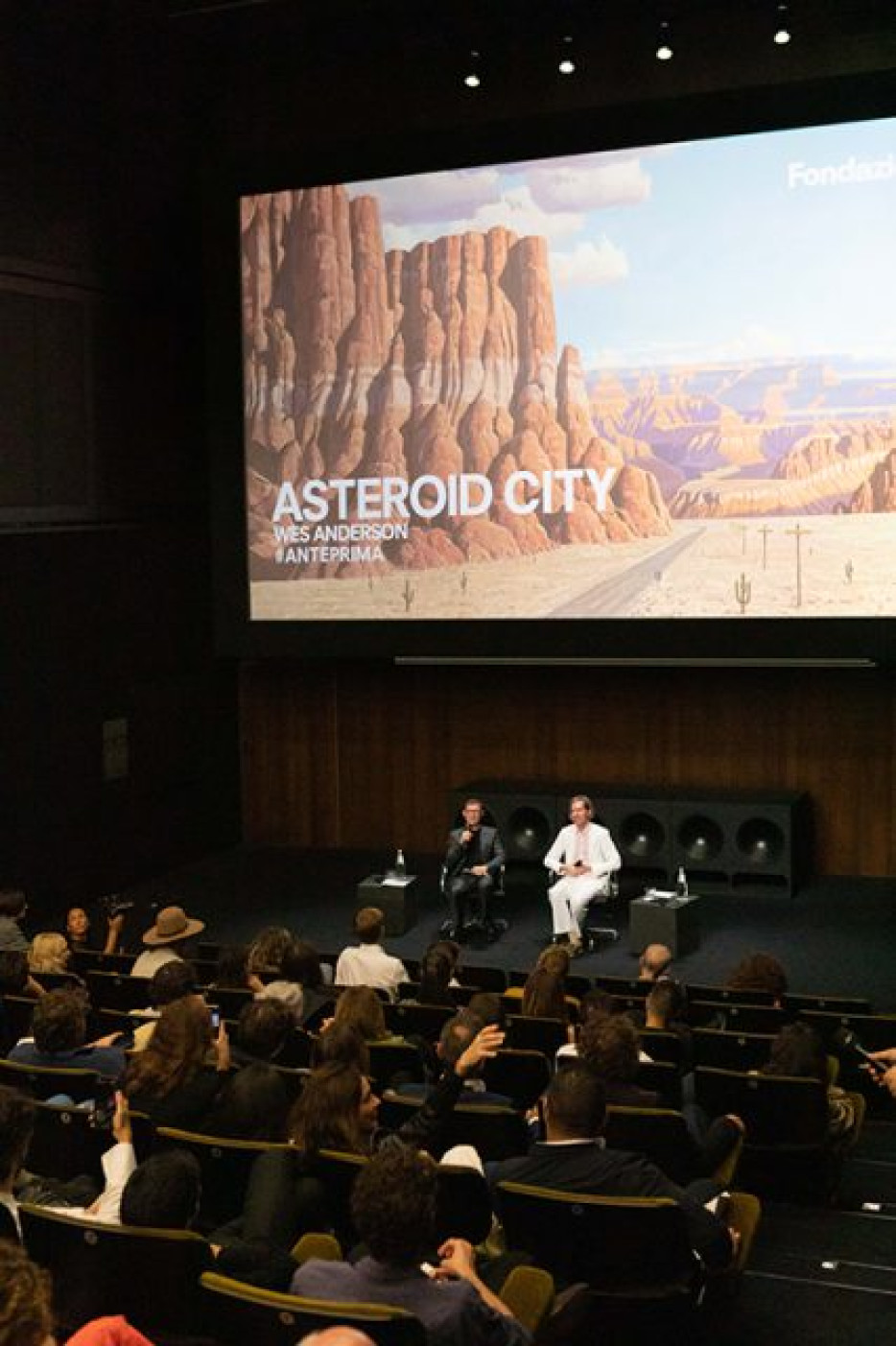
Courtesy: Cannes Film Festival
Photo by Joel C Ryan
Text: Denis Kataev



